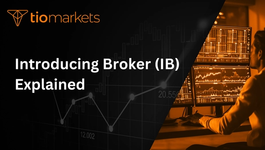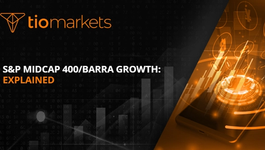Ongoing Charges Figure (OCF): Definition | TIOmarkets
BY TIOmarkets
|June 3, 2024The Ongoing Charges Figure (OCF) represents a comprehensive way to understand the costs associated with an investment fund. It is designed to help investors make informed decisions by providing a clear picture of the annual costs that will impact their investment returns. This article delves into the intricacies of OCF, explaining its significance, how it is calculated, and its implications for investors.
Understanding Ongoing Charges Figure (OCF)
The Ongoing Charges Figure is a critical metric for investors, offering a transparent view of the costs incurred when investing in mutual funds or collective investment schemes. Unlike other cost metrics, the OCF includes all the operational and management expenses that a fund incurs throughout the year.
Components of OCF
The OCF encompasses various charges that are essential for the fund's operation. These include management fees, custodian fees, audit fees, and other operational expenses. Importantly, it excludes transaction costs and performance fees, providing a clearer view of the ongoing costs that affect the fund's net asset value.
Management fees are a significant part of the OCF, compensating the fund managers for their expertise and efforts in managing the investment portfolio. Custodian fees cover the costs of safeguarding the fund's assets, while audit fees pay for the annual financial verification of the fund's accounts.
Calculation of OCF
Calculating the OCF involves summing all the annual operational costs of the fund and dividing it by the fund's average net assets over the year. This ratio is expressed as a percentage, providing a straightforward way for investors to gauge the impact of these charges on their investment returns.
The formula for OCF is as follows: OCF = (Total Annual Operational Costs / Average Net Assets) x 100. This calculation offers a standardized way to compare the cost efficiency of different funds.
Significance of OCF for Investors
Understanding the Ongoing Charges Figure is crucial for investors aiming to maximize their investment returns. The OCF directly affects the net return on investment, making it an essential factor in the selection of investment funds.
Impact on Investment Returns
The OCF reduces the fund's net asset value, thereby impacting the returns that investors ultimately receive. A higher OCF means that a larger portion of the fund's returns is used to cover operational expenses, reducing the net returns available to investors.
Investors should compare the OCFs of different funds to identify those with lower operational costs, potentially leading to higher net returns.
OCF vs. Other Cost Metrics
While the OCF provides a comprehensive view of the ongoing costs, it is not the only cost metric that investors should consider. Transaction costs, although excluded from the OCF, can also significantly impact investment returns, especially in funds with high portfolio turnover.
Performance fees, if applicable, should also be considered, as they can vary based on the fund's performance and further affect the net returns to investors.
Choosing Investment Funds: The Role of OCF
When selecting investment funds, the OCF is a pivotal factor to consider. It offers a standardized measure to compare the cost efficiency of various funds, aiding investors in making informed decisions.
Comparing Funds Based on OCF
Investors should use the OCF as a tool to compare the cost efficiency of different investment funds. Funds with lower OCFs are generally more cost-efficient, potentially leading to higher net returns for investors.
However, it is also important to consider other factors such as the fund's performance history, investment strategy, and risk profile in conjunction with the OCF.
OCF and Investment Strategy
The significance of the OCF may vary depending on an investor's strategy. For long-term investors, a slightly higher OCF might be acceptable if the fund demonstrates consistent high performance. Conversely, for those seeking cost efficiency in the short term, funds with lower OCFs might be more attractive.
Ultimately, the OCF should be considered alongside other factors to align with the investor's overall investment goals and strategy.
Conclusion
The Ongoing Charges Figure (OCF) is a vital tool for investors, offering a clear and standardized way to understand the annual costs associated with investment funds. By considering the OCF in the context of other factors such as performance, transaction costs, and investment strategy, investors can make more informed decisions, potentially enhancing their investment returns. As with any investment decision, thorough research and consideration of all relevant factors are essential to achieving investment success.
Benefits of Monitoring OCF Regularly
One crucial aspect that investors should not overlook is the importance of monitoring the OCF regularly. By keeping track of the OCF, investors can assess whether the fund's operational costs are increasing over time, potentially impacting their returns.
Regular monitoring of the OCF can also help investors identify any changes in the fund's fee structure or management practices that may affect the overall cost efficiency of the investment.
Utilizing OCF in Investment Planning
Integrating the OCF into investment planning processes can provide investors with a structured approach to evaluating the ongoing costs of their investment portfolios. By setting benchmarks based on acceptable OCF levels, investors can ensure that their investment choices align with their cost efficiency goals.
Moreover, incorporating the OCF into investment planning can facilitate proactive decision-making, allowing investors to adjust their portfolios if the OCF exceeds predetermined thresholds.
Role of OCF in Risk Management
While the OCF primarily focuses on cost efficiency, it also plays a role in risk management for investors. Understanding the OCF can help investors assess the stability and sustainability of a fund's operations, providing insights into the fund's financial health.
By considering the OCF alongside other risk metrics, investors can gain a more comprehensive view of the potential risks associated with a particular investment fund, enabling them to make more informed risk management decisions.
OCF and Portfolio Diversification
Portfolio diversification is a key strategy for managing investment risk. The OCF can influence portfolio diversification decisions, as high OCFs in certain funds may prompt investors to seek lower-cost alternatives to maintain a balanced and cost-effective portfolio.
By evaluating the OCF across different investment options, investors can optimize their portfolio diversification strategy, balancing risk and cost efficiency to achieve their investment objectives.
Future Trends in OCF Analysis
As the investment landscape evolves, the analysis of OCF is expected to undergo further developments. Future trends may include more granular breakdowns of OCF components, enhanced benchmarking tools for comparing OCF across funds, and increased transparency in reporting OCF to investors.
Additionally, advancements in technology and data analytics are likely to streamline OCF analysis processes, providing investors with more detailed insights into the cost structures of investment funds.
Impact of Regulatory Changes on OCF
Regulatory changes can significantly impact how OCF is calculated and disclosed. Investors should stay informed about regulatory developments related to OCF reporting, as changes in regulations can influence the comparability and transparency of OCF information across different funds.
Adapting to regulatory changes and understanding their implications on OCF analysis is essential for investors to make well-informed investment decisions in a dynamic regulatory environment.
Conclusion
Monitoring the Ongoing Charges Figure (OCF) is essential for investors to assess the cost efficiency and risk implications of their investment portfolios. By integrating the OCF into investment planning, risk management, and portfolio diversification strategies, investors can make informed decisions that align with their investment goals and preferences. As the analysis of OCF continues to evolve, staying abreast of future trends and regulatory changes will be crucial for investors seeking to optimize their investment outcomes.
Start Trading with Transparency
Understanding the Ongoing Charges Figure (OCF) is just the beginning of making informed investment decisions. At TIOmarkets, we not only provide transparency in costs but also offer a robust trading platform for Forex, indices, stocks, commodities, and futures markets. With over 170,000 accounts opened in more than 170 countries, our platform is designed to cater to both novice and experienced traders. Enhance your trading skills with our educational resources and step-by-step guides. Ready to trade with low fees across 300+ instruments in 5 markets? Create a Trading Account today and join a community of savvy investors at TIOmarkets.

Risk disclaimer: CFDs are complex instruments and come with a high risk of losing money rapidly due to leverage. You should consider whether you understand how CFDs work and whether you can afford to take the high risk of losing your money. Never deposit more than you are prepared to lose. Professional client’s losses can exceed their deposit. Please see our risk warning policy and seek independent professional advice if you do not fully understand. This information is not directed or intended for distribution to or use by residents of certain countries/jurisdictions including, but not limited to, USA & OFAC. The Company holds the right to alter the aforementioned list of countries at its own discretion.
Join us on social media

Behind every blog post lies the combined experience of the people working at TIOmarkets. We are a team of dedicated industry professionals and financial markets enthusiasts committed to providing you with trading education and financial markets commentary. Our goal is to help empower you with the knowledge you need to trade in the markets effectively.





